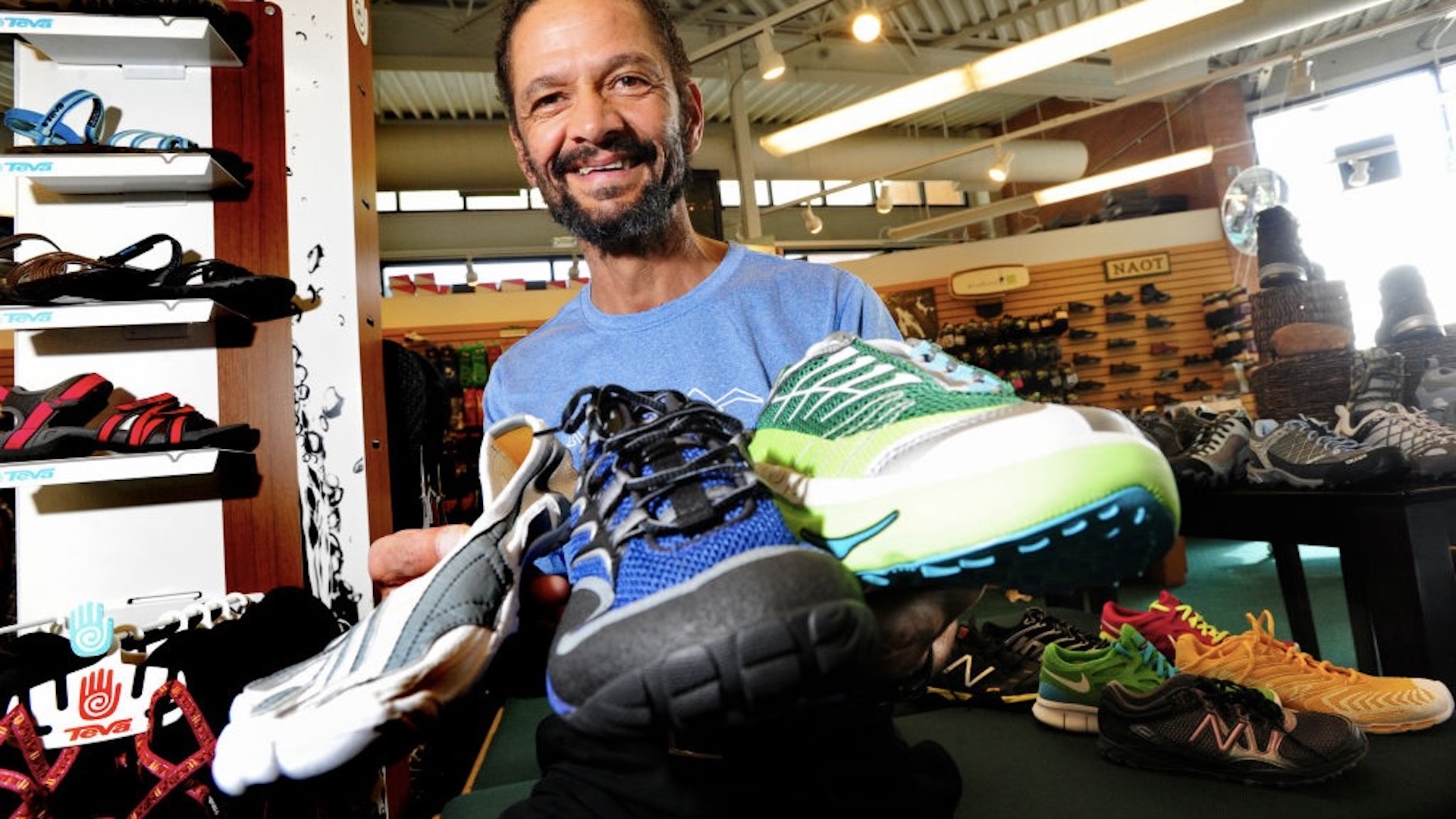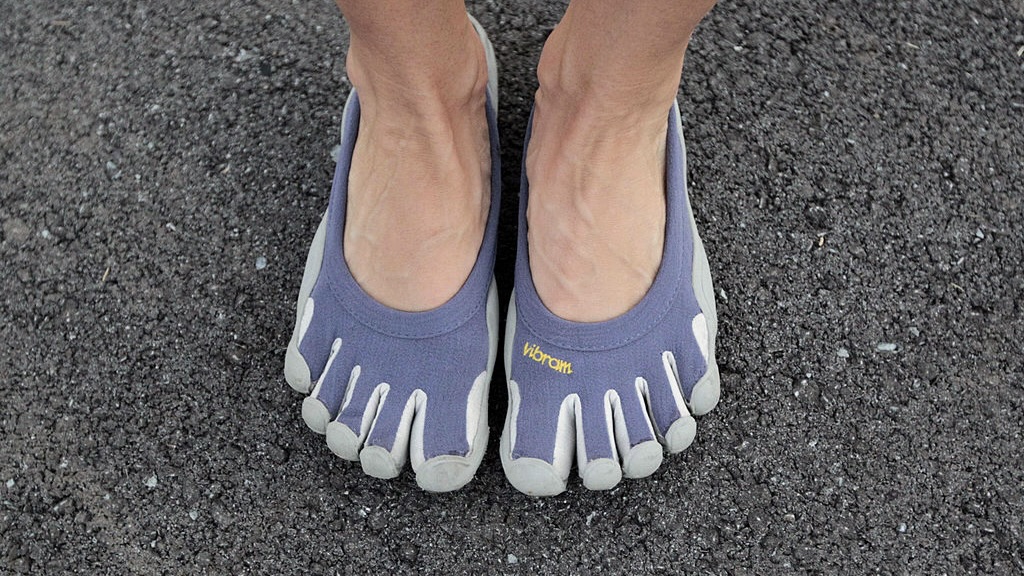How to start barefoot running – without getting injured
Ready to shed your shoes? Here's how to take your first steps in the world of barefoot running without hurting yourself

Barefoot running involves foregoing modern heavily-cushioned footwear, and either running completely unshod, or with barefoot running shoes that let you feel the ground beneath your toes while protecting your skin.
Many runners believe that barefoot running has benefits for performance, especially the avoidance of injuries in the long term. But how do you get started? It's not as simple as just pulling off your sneakers...
Don’t rush in
First and foremost, it's vital that you take your time to get used to barefoot running. After all, you've spent almost your whole life walking outside in shoes, so your feet and the rest of your body are used to having that support and protection.
If you start barefoot running with completely bare feet or while wearing minimalist style barefoot shoes, you could leave yourself open to pain and injuries. It's important to take your time to get into barefoot running by allowing your feet, muscles and joints to adjust to running without footwear.

Choose the right barefoot shoes
Barefoot running shoes look and feel much more minimalist than conventional road or trail running shoes, and are intended to help you run as you would without footwear. Barefoot shoes still offer some protection from hazards on the ground, such as stones and tree roots, but they are characterised by minimal cushioning in the midsole and heel.
Comparing the heel-to-toe drop of barefoot running footwear to traditional running shoes gives another insight into the differences. In more traditional running shoes, the heel-to-toe drop will be around 10mm to 12mm, with cushioning of around 10mm to 12mm at the heel.
Meanwhile, barefoot running shoes will have a heel-to-toe drop of under 8mm. Some have zero drop, which means the forefoot and heel are at the same level in the shoe.
All the latest inspiration, tips and guides to help you plan your next Advnture!
Some barefoot running shoes have separated toes, while others don't. For example, Vibram FiveFingers and Vivibarefoot shoes are both aimed at barefoot runners, but they fit differently. Whichever you choose, barefoot running shoes also tend to have a wider fit so your feet can more naturally spread out inside the shoe, rather than being supported.
Other differences between minimalist versus maximalist running footwear is the structure. The sole is usually soft and thinner so you can feel the texture of the ground.
The upper materials will also be more flexible. Some barefoot running fans report that once you move to barefoot running shoes, you can never return to supportive running shoes because they feel too heavy and cumbersome.
There are barefoot running shoes that are more suitable for road running, and those that are better for the trails. Even if you hope to become a barefoot runner, you’ll still welcome some protection underfoot from rough paths and tracks.

What do barefoot running shoes do?
Manufacturers make various claims about the benefits of barefoot running shoes, though it's worth bearing in mind that evidence doesn't always support these.
The lower heel-to-toe drop naturally encourages you to land more on your midfoot or forefoot rather than your heel. Minimalist shoes won’t automatically change your running gait, but they can help to teach you to run without striking the ground so hard.
You will feel the ground more in barefoot running shoes. It’s claimed that being more in touch with the ground improves proprioception, which is important for runners.
Barefoot running shoes tend to weigh les than more traditional running footwear. The plus side of this is it takes less muscle power in your legs to lift your feet off the ground. This can be a bonus, so the barefoot running fans say, when running many miles because you will become les fatigued. The trade-off is less cushioning.
It sounds good, but the science doesn't necessarily back up manufacturers' claims. In May 2023, Vibram settled a $3.7 million class action lawsuit over unsupported claims that its shoes improve foot health by strengthening muscles and preventing injury.
"Vibram expressly denied and continues to deny any wrongdoing alleged in the Actions, and neither admits nor concedes any actual or potential fault, wrongdoing or liability," read the court brief.
A few words of caution
Barefoot running isn't for everyone, and that's fine. While it’s possible for any runner to start barefoot running, you should be aware that this style can cause some issues and injuries. If you are doing less heel striking and more mid or forefoot ground striking this can put more strain on the Achilles tendons, which can lead to injury for some runners.
Also, if you have plantar fasciitis, tendonitis or flat feet, barefoot running might not be right for you.
Walk before you run barefoot
It’s a good idea to start slowly with with barefoot running, and you can begin by spending more time generally without your usual footwear. This could mean going barefoot around the house and wearing barefoot shoes for walking.
It’s still important build up the amount you walk in barefoot shoes, but as your body becomes more familiar with walking without supportive footwear, it should be easier to make the transition to running.
Start slowly – and build up
Runners should slowly incorporate more barefoot running into their training. For example, you could do a short barefoot run once of twice a week or do a warm up before each run as a barefoot session.
You should also choose a location where feet can adjust slowly. You might choose to run short distances without shoes on a beach. If you are wearing barefoot footwear, then head to a location where the terrain is flat and easy underfoot.
The most important factor is to build the strength in your arches and improve your running form, before you totally give up your traditional running shoes.
A three-step guide to barefoot running
Get set: Once you have a pair of barefoot running shoes, you should spend some time walking in them. Make sure you also stretch your calf muscles and arches if they become tired. Go outdoors as well as indoors when walking in the shoes.
You could also try running a short distance on a soft surface, such as wet sand or grass.
Work on running dynamics: Running barefoot will put different pressures on tour body’s joint and muscles to start with. Doing some drills can help with the transition.
For example, you should aim to land on your mid-foot instead of the heel. Try to do some short running drills where you focus on landing on the mid-foot.
Think about your running cadence. The experts suggest you want to aim for around 180 strides per minute. There are apps that can help you to keep time so you run a faster cadence. Note that it’s difficult to set such a quick cadence when you heel strike running.
Focus on making the landing of each foot as quiet and gentle as possible.
Now run for longer: Think about the 10% rule. This is where you build your distance by only 10% each week. Start with short distances in barefoot running shoes and build slowly so as to avoid niggles and injuries due to overstraining muscles and joints.
Stop if it hurts: If you feel any pain, you should stop and either shorten the distance or focus on more stretching for a while. It will take time and patience to be able to proceed happily with barefoot running but, the fans say, it will be worth it.
- The best road running shoes: our top recommendations for hitting the streets

Fiona Russell is a widely published adventure journalist and blogger, better known as Fiona Outdoors. She is based in Scotland and is an all-round outdoors enthusiast with favorite activities including trail running, mountain walking, mountain biking, road cycling, triathlon and skiing (both downhill and backcountry). Aside from her own adventures, Fiona's biggest aim is to inspire others to enjoy getting outside and exploring, especially through her writing. She is also rarely seen without a running skort! Find out more at Fiona Outdoors.
